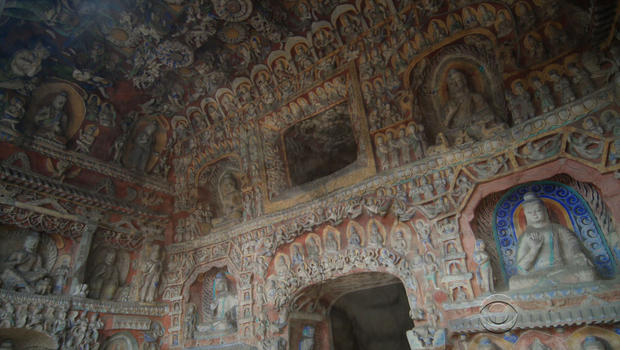Conservationists race to save ancient artwork in China
DATONG, China - Some ancient Chinese artwork is being destroyed by a modern-day scourge. But a rescue mission is underway.
Conservationist Yin Gang is overseeing an ambitious effort to save the artwork in the ancient Buddhist caves.
He says the damage from pollution is very visible on the surfaces.
But what is it supposed to look like?
Imagine, Yin said, speaking in Chinese, "stunning and colorful paintings, a complete temple."
We can hardly tell what they are now.
Some 1,600 years ago, sculptors carved the Yungang Grottoes into the sandstone cliffs of central China.
For centuries, the soft sandstone was eroded by blasting wind that whipped deep into these caves. Now pollution is the biggest threat.
And coal dust.
Coal dust easily attaches to the surface, Yin pointed out. It can slowly erode and get into the sandstone.
These grottoes sit in the heart of China's coal country. Shanxi province produces nearly 1 billion tons of coal per year - a quarter of China's output.
To draw tourists and improve its image, China got U.N. World Heritage status for this site. But protecting the grottoes meant more than just cleaning them.
The government shut down small coal plants and closed a nearby road, which used to see the passage of thousands of coal trucks every day. It even relocated entire villages - moving more than 4,000 families who used to rely on coal for heating and cooking.
Today, the painstaking process of restoring these sculptures continues and historians hope this effort will become a model for other ancient sites under threat across China.
Acid rain is blamed for turning the nose black on this 230-foot Buddha, and for damaging these grottoes in eastern China.
"I hope we can repair and restore the precious artwork made by our ancestors," Yin said, "so we can leave them for our children."
It's a race to protect these antiquities from the destructive work of another era: pollution.


